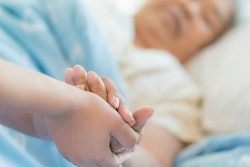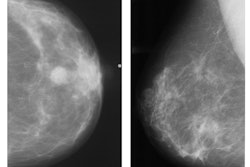
Mammography facilities should strive to ensure accessibility and improve the experience of disabled patients in breast cancer screening, according to commentary published September 6 in the Journal of Medical Imaging and Radiation Sciences.
In their article, Lene Andersen, a disabled accessibility advocate and consultant and president of Two North Books in Toronto, Canada, and Natasha Batchelor, a mammography and breast imaging navigator and supervisor at Humber River Hospital, also in Toronto, wrote about their personal experiences as well as measures breast imaging facilities should take for patients who have physical disabilities.
"Healthcare systems contain many barriers for disabled patients, with mammography screening being just one example," the two wrote. "It's time to identify and remove the barriers to ensure health equity for people with disabilities."
Andersen wrote that she has been unable to receive mammograms for years due to the fact that she uses a wheelchair. She has had a breast lump over the last several decades that has been monitored via ultrasound, but the fragrance used to scent ultrasound gel triggers asthma attacks in her.
"[Once] I called to book another appointment for a breast ultrasound, intending to bring my own fragrance-free ultrasound gel," Andersen wrote. "This exam was denied, as Health Canada had by then stopped funding breast ultrasounds for breast cancer screening. I tried to explain my situation, asking for accommodation for my disability, but was met with a brick wall."
In the commentary, Batchelor wrote that resources are limited for imaging patients with mobility limitations, as well as for mammography technologists trying to best accommodate their needs. In 2022 she hosted a webinar titled, "Mammography in People with Physical Disabilities," which was hosted by the Canadian Association of Medical Radiation Technologists.
"As mammographers, it's imperative that we arm ourselves with the tools and strategies to be successful when imaging people with disabilities," Batchelor wrote. "We need to ensure a positive imaging experience to prevent fear becoming a deterrent to routine imaging."
Andersen and Batchelor identified three types of barriers to mammography screening: physical, social, and procedural. The following examples they listed fall into these types:
- Inaccessible mammography clinics or suites
- Inaccessible mammography equipment
- Inaccessible changing rooms
- Bias and negative attitudes or behaviors of health professionals
- Lack of training and resources for learning to image disabled patients
- Intake/admissions procedures
- Appointment accommodations
The authors wrote that mammography screening facility staff should consult with accessibility professionals to analyze potential barriers and implement solutions. They also suggested that facilities should consult with disabled patients and that professional associations and individual clinics should unite in advocating for removal of these barriers.
"While that work is in progress, much can be done to improve accessibility in clinics by awareness of the issue, accessibility and positioning training, purchases of accessibility equipment, such as Hoyer lifts, adjusting furniture and equipment, and removing procedural barriers to equality for disabled patients," they wrote. "We strongly recommend that individual medical imaging technologists, clinics, and healthcare systems take the initiative to begin that process as soon as possible."
The full commentary can be found here.




















